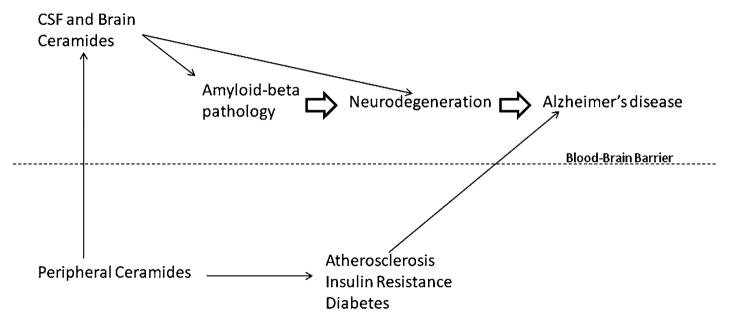Fig. 1.
Peripheral ceramides may be associated with Alzheimer’s disease through either direct or indirect mechanisms. Direct mechanism: Peripheral ceramides reflect CSF and brain ceramide levels, both of which have been associated with amyloid-beta levels and neurodegeneration in animal and laboratory studies. Indirect mechanism: Peripheral ceramides have been found to be associated with atherosclerosis, insulin resistance and diabetes, all of which are known risk factors for AD

